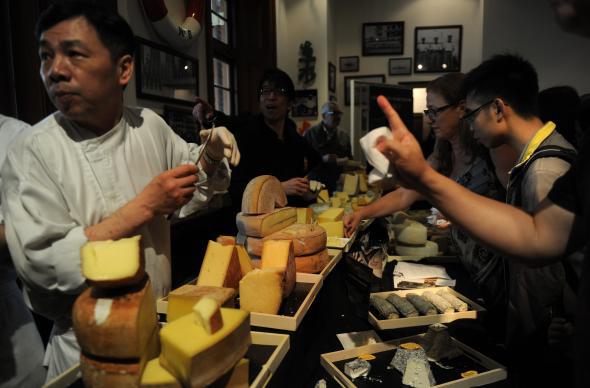First they came for the pecans, and we did nothing.
Jeff Wilson of Bloomberg reports on the latest example of Chinese demand totally skewing the market for a commodity:
Spot wholesale 40-pound blocks of cheese climbed 0.5 percent to $2.3625 a pound today on the Chicago Mercantile Exchange, the highest since the data began in 1997. U.S. exports in January climbed 46 percent from a year earlier to 32,118 metric tons, as Chinese purchases doubled, according to the Dairy Export Council.
The ongoing drought in California is also reducing production.
Chinese consumers are actually affecting U.S. cheese prices in two ways. First, though Chinese diets are traditionally cheese-averse, it’s becoming more popular there. Second, Chinese demand for dried milk from Australia and New Zealand is prompting farmers in those countries to curtail cheese production, putting pressure on U.S. supplies.
Since thousands of Chinese infants fell ill from tainted milk powder in 2008, the country’s demand for imported powder has skyrocketed, putting pressure on supply in a number of countries. Hong Kong has had to impose tough restrictions on the amount of milk powder that can be brought out of the territory in order to preserve supplies for local consumers.
Of course, with potentially massive growth in the Chinese market for American cheese, we ought to figure out what we’re calling the stuff.
